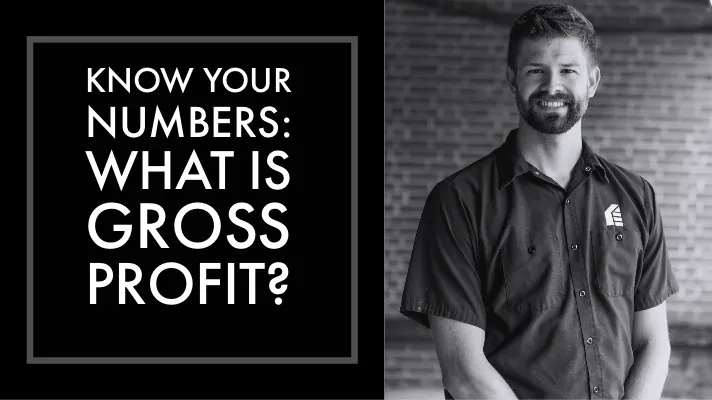Does looking at your company’s numbers in financial statements from your bookkeeper leave you at a loss for what’s going on?
It can be tough to understand them when we never had anyone teach us, and learning about the numbers was not required to shift from tradesman to business owner.
I encourage everyone to get comfortable with their numbers so that you can measure and understand performance across various time frames, and be able to make financial decisions quickly about your business. I’ll be writing a series on learning basic financial principles so you can understand what’s going on in your business. It’s important that you understand your full financial picture so that you know we are pricing jobs at the correct markup, when to make equipment purchases, or when the right time for that new truck you’ve been wanting is here.
On a profit and loss (PNL) statement, the first numbers you come to are Income, Cost of Goods Sold (COGS), and Gross Profit. For most of us this breaks down to Sales (revenue earned) minus all direct cost to produce what you sold equals gross profit. We all understand that our sales number is how much money we brought in during the measured period. If you’re using accrual based accounting, only sales that have been produced (or portion of) will show up here on the PNL statement. In cash based accounting, deposits and all cash flow, earned or not, will show up here as income. I recommend accrual based accounting so that large deposits and payments coming in do not skew your profitability month to month on your financial statements.
COGS is where I generally see the first accounting mistake happen for a lot of construction business owners. Here I’ll attach an example of a profit and loss statement.
In the example above, the whole COGS section consists of materials, equipment leases, field wages, subcontractor fees, and any additional cost related directly to the fulfillment of the product or service you’re selling. These are also called Direct Cost. Don’t mistake your production team members for the default company wages/salaries that will be listed down as operating expenses. Most bookkeepers default all of your wages as operating expenses, and this will falsely inflate your gross profit margin in your accounting software. Examples of other items often missed here would be cost of any temporary field utilities, permits, shipping fees for materials, and porta-jons.
In the example above, field wages cost nearly 10% of the total sales generated for the month, and we had an effective gross profit margin of ~63%. If we had field wages down below as overhead operating expense, we would think that we were operating at a 73% gross margin which would not be accurate, and could lead to selling jobs at the wrong markup.
Once we have all of our direct costs up in the COGS section, and our income ideally represents earned income, what’s left is the gross profit. This is how much money is left over after producing our product that we use to pay overhead operating expenses and make a net profit. With our gross profit calculated, we can do gross profit divided by total income to get gross profit margin. This is one piece of information we can use to make adjustments to our sales process to ensure our company is profitable.
Now we can measure what gross profit margin our business is currently operating on. In my next Know Your Numbers, we will be covering what is overhead and building correct overhead expenses which will be the 2nd important piece of information to make sure we’re charging the correct amount for our services.
Nate Griffin
Coach


